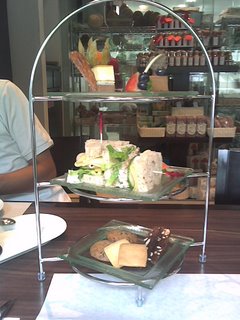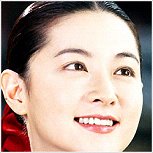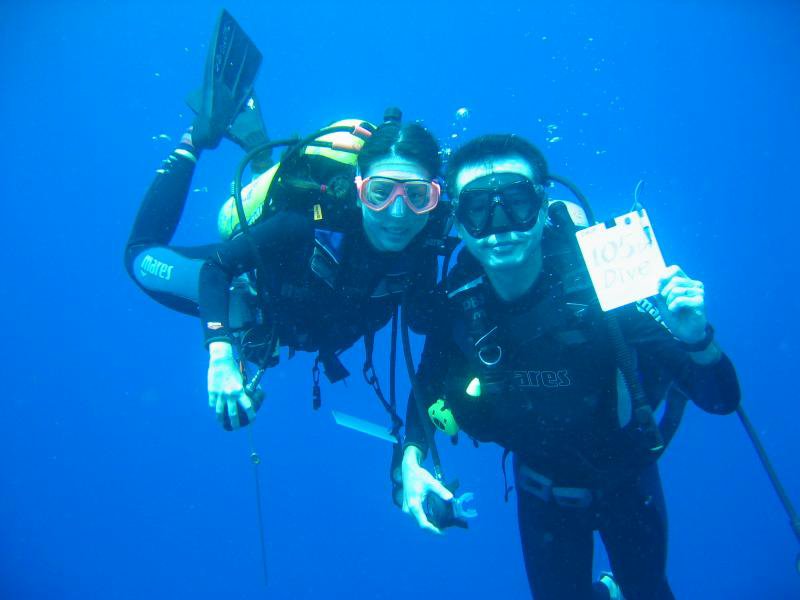Thursday, June 29, 2006
Remember Via Mar?
 I realized we took some pictures on that night. So I will post it for your viewing pleasure.
I realized we took some pictures on that night. So I will post it for your viewing pleasure.Via Mar - the Spanish Restaurant at Esplanade that offers:
1. 10% off your dining bill if you are watching a show in Esplanade; OR
2. 20% off your drinks After the show, pop by again for drinks and snacks, and you will get.
And so we went back there promptly after our show to get a few drinks.

 Chup asked for a blowjob. And he felt very cheated. He said not worth his money at all! He got a teenie weenie blowjob... :[
Chup asked for a blowjob. And he felt very cheated. He said not worth his money at all! He got a teenie weenie blowjob... :[... the one who is very satisfied with hokkien mee lunch at plaza sing foodcourt
 Glamour Shots
Glamour ShotsI think my company is feeling quite rich. They actually hired professional photographers to take glamour shots for us so that we can post it in our organization chart.
I quite appreciate the management for doing this. Of course, whether the staff are happy with the results is another story. After all, it's the singer not the song. He he...
...the one who is craving for fried hokkien mee
 Corduroy & Finch
Corduroy & FinchRating: ***
Add: 779 Bt Timah Rd #03-00
Tel: 6762 0131
Price: Around S$20/pax
Normal dining hours
Visited on 25 June 06 with Chup n Aunt Rose.
My 2nd time at this American style Sandwich outlet. Found another blog which I thought quite informative with many photographs. I agree with the author. The food is nothing great. The rest is made up by ambience.
The highlight of the place would be their glass floor-to-ceiling refrigerator displaying food at its freshest. Beyond the glassed refrigerater is a showcase of the kitchen showing the award winning Michelin chef at work!
My suggestion would be, eat your main course elsewhere and go there for their dessert which I think is quite commendable. Not worth paying for their main course.

My favourite - Lemon Tart.
Definite no no for those who hate sour food.

Chup oredered this good looking but not great tasting called something like "Tea Time Fiesta".



Its three-tiered with combinations of cakes, sandwich and cookies
 accompanied with your choice
accompanied with your choiceof tea.
Aunt Rose oredered Caramel something... Can't remember the name. She thinks its quite rich and fragrant.
...the one who thinks the Lemon Tart's standard has dropped :[
Wednesday, June 28, 2006
~~~ mossies and coil ~~~
My house is always infested by mossies!!! Imagine walking from carpark to the house, passing through the garden, I can get 7 bites!!! The mossies are very fierce and they will literally chase me. Their feasting time is between 5pm - 7 pm, just before the sun sets. Fiercest at those hours! I have to run to avoid them! Somehow, they only bite me and rarely Chup. My theory is, Chup's legs are too hairy. Extra effort to suck his blood. He will only be bitten if I am not around. So for this weekend, good luck to you, Hubby...
Is this the price you pay for living in a richly landscaped area?
But that's no excuse, right?
Chup is in the Management Council of the Condo and I have complained god knows how many zillion times to him. I even threatened to call Ministry of Environment so that they can take prompt actions. Apparently our block already receives extra fogging but the problem persists. We are getting weekly instead of fortnightly for other blocks. I heard the Estate Manager would be brought to Court because a resident contracted Dengue! Good! I think they should fog every 2 days given the grave situation!
Colleague Jackie has so sweetly bought me some citronella incense during her trip to Bali. So touched, so touched... :@ It's packaged beautifully and the entire coil can actually last 24 hours. I still see a mossie buzzing around even when the coil was burning. But that mossie definitely looked dizzy to me.

Citronella incense from Bali. Beautiful packaging.


Can't think of anywhere to place the incense. So I hanged it on the handrail in the common area in front of my unit. But it's causing a lot of unwanted litter...
So we had to innovatively create a stand out of our clothes hanger. Check it out. Not bad huh?
... the one who's heading for Siem Reap tomorrow. Yipee
Tuesday, June 27, 2006
S$800 - the Sequel
What can you do with this amount of cash?
- A lifetime of parking coupons?
- An LV Bag from Paris after sale and tax refund?
- 3 trips to Cambodia?
- 40 sessions of mahjong?
- 400 plates of chicken rice?
- 10 pairs of bikinis?
- An O2 phone?
- 2 PDAs?
- over 40 months of handphone subscription?
- 8 pretty dresses?
- 4 pretty dresses from BLUM?
- 145 steak sandwich from Bratwurks?
- 16 times of fine dining at DaPaolo?
...the one who is feeling the Ouch....!!!
Tuesday, June 20, 2006

Rainy Ride
I took this shot in KL last week. There’s nothing special about it, except that I like it. I like it because of the context of it all. We were on a bus going back to our hotel after a tiring but fruitful day at Putrajaya. Everybody was asleep on the bus. It had rained at the right time, after a day of good sunshine. The bus took a detour to avoid the more severe jams. It was the rush hour coming on. The waters were rising, and the headlights were turned on. In a while, we will be enjoying a hot bath, and then the prospect of watching the football match between England and Trinidad. For now, the weather was cool, and we could just sit back and enjoy the ride from an elevated level. So you see, the beauty of a photograph, or anything for that matter, is in its context, don't you think?
Chup
Monday, June 19, 2006
"Singapore: Place or Nation"
Occasionally, you come across an article (in this case an abstract of a landmark speech) that is so timely and penetrating that you just have to share it around. It's by Professor Linda Lim, and it was published in the Straits Times today. I have the e-copy, and because it is well worth keeping, I post it here in its entirety:
June 19, 2006
Singapore: Place or nation? What makes a country a home? Is it emotional ties or purely economic self-interest? By Linda Lim, For The Straits Times
"SINGAPORE'S economic development has never relied on its being a nation. First a colonial port where immigrant merchants and labour served the needs of the British empire, after independence in 1965 its economic policy still located the city-state within the regional trade and global production networks of foreign corporations.
Unlike Asia's other export-oriented 'developmental states' - Japan, South Korea and Taiwan - Singapore did not actively nurture or encourage a local capitalist class. Foreign and state enterprises were favoured, so 'national champion' outfits such as Toyota, Samsung and Acer never developed.
Instead, Singapore has always been a 'global city' - a place where parts and people are imported to produce goods and services that are exported to foreign consumers.
To be sure, given its size constraints, the strategy of being a niche player in multinationals' global value chains is quite defensible, even if other small countries - such as Switzerland, Denmark, Finland and New Zealand - have managed to grow locally owned global companies.
However, in Singapore, it is not market actors but the state that targets particular niches in global value chains, filling them overwhelmingly with subsidiaries of foreign enterprises. State policy has shaped local resources - labour, land, infrastructure, housing, fiscal regimes and cultural amenities - to provide a competitive place for particular foreign economic entities to locate.
The standard justification for state intervention in an economy is 'market failure' - where resources are not efficiently allocated because of the divergence of private and social costs and benefits.
In health, education and infrastructure, for example, society's net gain from an investment is greater than the private return to the individual, resulting in under-investment if left to market forces.
Market failure is common in developing countries but, as they develop, so do markets. State intervention then becomes less necessary. Yet the Singapore state has kept its developmental role and control of the economy way past the stage at which a market-believer would expect it to 'wither away'.
Active targeting
IT DOES not merely enhance productivity through social investments, but also determines the sectoral allocation of resources by shaping relative resource endowments and moulding competitive advantage in certain industries.
Thus state policy has targeted the development of specific 'clusters' in which Singapore does not have the requisite local resources, markets or leading companies.
In the capital- and talent-intensive field of the life sciences, foreign talent is imported (sometimes by paying above-world-market rates), and capital subsidies provided to foreign firms, to produce medical breakthroughs for global consumers.
This might make Singapore a profitable place for parts of the life sciences' global value chain to locate. But it is not clear where Singapore the nation benefits, since the jobs, profits and goods are produced overwhelmingly by and for foreigners. In this case, the Singapore state may be seen as acting as a steward of the interests of non-Singaporeans.
Foreign and local economic interests may be complementary. But if the state did not attract, steer and push resources in the direction of the life sciences, resources would be allocated to other sectors by local entrepreneurs. In a market economy, every investment choice, private or public, has an opportunity cost against which its economic benefit must be evaluated.
The Singapore state's penchant for 'picking winners' reflects its continued adherence to the last generation's successful industrial policy, and its distrust of markets and local private entrepreneurs as drivers of the economy, and possibly also as alternative leaders of a more pluralistic political and social system.
A contradiction
THE official encouragement of entrepreneurship is based on a contradiction, since individual initiative and risk-taking in response to market forces are the essence of private entrepreneurship, not government exhortations, training and incentives. Both entrepreneurship and creativity spring from social conditions and an economic policy environment very different from the top-down control model found in Singapore.
The economic primacy of place over nation is reflected in the government's recent decision to allow international gaming companies to establish casinos in Singapore. Responding to local objections based on 'values' as well as economic concerns, the government argued that casinos would not undermine Singapore society because Singaporeans would not be involved in the business as consumers but only as workers - though we may expect casino employees to be disproportionately foreign.
Singapore, in short, is to be a place where foreign profits are earned from foreign customers served disproportionately by foreign workers, and it is only the disentanglement of place from nation that makes the casino enterprise justifiable, given national objections. Such disentanglement may be considered inevitable given contemporary globalisation trends, the diminution of nationalism globally and Singapore's small size.
A state-directed foreign-dependent place-based economic development strategy could also yield higher income and non-monetary returns to nationals than market-determined local-entrepreneur-led nation-based activities.
But there are also economic risks and potential losses associated with defining Singapore merely as a place in competition with other places around the world. It exposes us to US columnist Tom Friedman's 'flat world' - ultimately a cost-based contest we cannot win - rather than building the particular competencies and strategies based on difference rather than sameness that strategy professors believe allow premium incomes to be earned by taking advantage of the world's roundness, rather than surrendering to its flatness.
For Singapore, this would mean 'market positioning' as a regional rather than a global city, exploiting location-specific advantages and limited regional competition, versus replicating the amenities of multiplying other 'global cities' such as London, New York or Shanghai.
Place-based economic development also has implications for Singapore as a nation. Most of the foreign workers who constitute a large part of Singapore's workforce are lower-skilled so will not be given the rights and responsibilities of citizenship. For them, Singapore is merely a place, not a nation.
The situation at the upper, more-educated, skilled and higher-income levels of the labour force is of more interest to the nation since it tends to be elites who lead nations and define nationhood.
Stepping stone
THE government's 'foreign talent' policy resonates with our own immigrant history and, by shifting our comparative advantage towards more highly skilled activities, is complementary, as well as competitive, with local talent. But compared with the United States, which has a similar history and policy, immigrants form a much larger proportion of the labour force here and are particularly highly represented at its upper echelons.
My own experience with Chinese and Indian nationals who studied in Singapore's universities, often on Singapore government scholarships, worked here for a few years, then went to the US to pursue their MBAs, suggests that most use the place as a stepping stone to the American job market. They tell me it is easier to get into a top American MBA programme, and to get a US visa, if they apply from Singapore than from their home countries. In the US, they tend to identify much more with students from their countries of origin, than with Singaporeans.
Economically, the circular flow of talent may benefit the economy by enhancing its flexibility. But politically and socially it may be a problem.
The nation, after all, is a political entity, and its ability to survive as such is already undermined in an era when globalisation allows economic survival and prosperity to occur with the bypassing of the national authorities in an increasingly 'borderless' world.
Today, in Singapore, place and nation increasingly do not coincide: Many of those in the place are not of the nation, and many of the nation are not to be found in the place.
What then constitutes the nation if it is to be more than an aggregation of the temporary or permanent residents of a place?
As elsewhere, there are different ways of 'being Singaporean', though much of our pre-nation-state identity was erased - most notably through language policy - to forge a 'new' national identity that would not conflict with survival and prosperity in a globalised world or encourage challenge to established domestic political authority.
National identity has been reshaped to serve economic and political goals, with the state itself becoming the determinant and arbiter of acceptable ethnic identities and their expressions, such as the enforced diminution of the Malay heritage of Peranakan Chinese and of the dialect heritage of the majority non-Mandarin-speaking Chinese.
If what makes a nation is its collective memory and shared values, it is difficult to find the nation in a place where memory has been erased or reconstructed and values pared to emphasise only social stability and material prosperity.
Fearful of the emergence of alternate centres of power, the Singapore state has pre-empted local private initiative in civil society as well as the economy, precluding the independent political involvement which engages and defines the citizens of nations but is typically denied foreigners, making them easier to control and, thus perhaps, the preferred inhabitants of the place.
A high-performing paternalistic state which engenders passive dependence and apathy on the part of contented - or fearful - citizens is perhaps a greater threat to nationhood than an under-performing state which permits and provokes active civic and political participation.
A nation cannot exist in a political vacuum and, as in any organisation, the empowerment of stakeholders is necessary to engender the 'sense of ownership' that can elicit the best performance from citizens as well as foreign talent.
As parents and teachers, we know that the best way to develop our children and students is to let them 'own' projects and make their own mistakes while 'learning-by-doing', even though we may be more efficient at doing things than they are.
A 'global city' implies 'global citizens' like our immigrant ancestors, distinguished by their willingness and ability to move and change nationality in response to the ever-shifting competitive attractions of other places. A 'global city' also requires leadership by a cosmopolitan elite able to navigate the complexities of a global economy, further legitimating continued political control by the members of such an elite. We may even end up with a situation where Singaporean 'heartlanders', emotionally committed to their birthplace and relatively immobile in the global job market, are ruled by potentially footloose 'foreign talent', while members of the Singapore-born elite, raised to be 'global', depart for foreign shores.
Biodiversity
VIEWING Singapore as a 'place' versus a 'nation' affects public policy. For example, Nature Society president Geh Min has noted that viewing Singapore as a city results in its physical environment being managed by urban planners and our land resources treated as real estate, defined by their globally determined commercial market value. Open spaces are seen as having value only as manicured parks, improving the urban quality of life.
Considering Singapore as a nation, however, would result in its physical territory, including the biodiversity represented in wild areas, being valued as a national treasure and birthright. Wild lands might then be preserved in their natural state for their emotive and affective appeal for nationals.
In education, Singapore the place and global city would overweight technical training of commercial value in subordinate parts of global value chains, and underweight the study of Singapore history, languages and literature which, like its security and economic future, are inextricably linked with those of its South-east Asian neighbours.
Singaporean scholarship students in the US have told me that they are often embarrassed that they do not know enough about their country and its neighbourhood to answer the questions of interested Americans.
Many Singaporeans see 'no use' in learning or thinking about our own past or present, while foreign faculty in local universities shy away from doing research on Singapore that might be construed as 'controversial' or critical of the imagined local conventional wisdom.
A place 'unknown' to its own privileged and educated youth, and which fades away in teaching and research, risks disappearing as a nation.
I believe that national identity must have an irrational and not just an economically rational component, coming from emotional ties rather than pragmatic self-interest.
If I choose to become a member of a nation because it gives me a good job and lifestyle, I am really interested in that nation only as a place, and it makes sense if one day I leave it for another place which can offer me superior conditions and opportunities.
It is when I stick around when a place cannot guarantee me a good life, or I am concerned with the welfare of others in that place, and try to improve things even at a risk to my own good life (say, I join the political opposition), that I can say I am of the nation, and not just the place.
In the same manner, it is when I enter public service even though it pays a fraction of what I could earn in the private sector, that I can claim to be primarily interested in the public good and national welfare and to have a passion for public service.
A recent audience of Singaporean students at an Ivy League university nearly all raised their hands when I asked if they were 'afraid of failure'. But tolerance of risk and acceptance of failure are required for political democracy, business entrepreneurship, knowledge creation and scientific discovery.
If 'fear of failure' among the young elite of a place as successful as Singapore comes from a culture created by a strong state (since it is not present in ethnic Chinese communities elsewhere), this may undermine the nation, and possibly even the economy of the place itself. "
The writer, a Singaporean, is professor of strategy at the Stephen M. Ross School of Business and director of the Centre for South-east Asian Studies, University of Michigan. This article is adapted from a talk given at the Institute of South-east Asian Studies on June 8.
Nobody who cares about Singapore can escape its poignancy, even if I find the central thrust a bit depressing and pessimistic. I feel this acutely when I stand before my class, and look into the faces of students from Indonesia, Myanmar, Philippines, China, Malaysia and Singapore. How many of them feel they belong here? In less than 2 weeks, my sister-in-law, who we are all very fond of, will be in effect 'migrating' to Japan. Strangely, it's been her dream all along, and her 5 years of stay here is a kind of a transit stopover. She isn't the only one I know who feels like that.
I believe Linda Lim is giving another talk at EDB's premises in Bukit Merah at the end of the month. I'll try to attend that if my schedule permits...
Chup
Sunday, June 18, 2006

Communal space
There is an Indian family living on the ground floor of my block in the condo. They moved here about a year or so ago; a couple with their elderly parents and a boy who must be about 2 years old. The family dotes on the boy, and they are always sitting out at the common stair area. Now this area is really a sterile stair landing and mail box corner, helmed in with blank walls and the front doors of 4 apartments. The area outside their apartment is unshaded turfing. This area is often buzzing with mozzies, especially in early evening. In spite of this, the Indian family would be seen sitting out here, either on the steps of the landing, or next to the drain. They would also occasionally lay out some beans on a plastic mattress to sun it on the concrete apron. Sometimes, they would walk the child, and then they would sit on the road side curb next to the guard house, watching the cars go by.
I find all this very appealing. I see the world through their eyes, and can empathize with them. I once saw the elderly parent walking back from the groceries a long way out from our condo, and offered him a ride in the car. But he declined. It’s alright, I said, we live in the same block. Yes, thank you, he said, but I prefer the walk.
They make me rethink about communal space, especially about how our external spaces in the condo are lifeless and left-over after-thoughts which nobody can use. It makes me think about how the condo would be transformed if we could just demolish the blank walls of the ground floor units and let them extend to outdoors. Of course, it would violate the Building Act, and infringes on “common” property, but it is precisely these invisible boundaries that kills the life of the “common” area. Somewhere along the way of cleaning up the slums, of not allowing residents to hang laundry outside, of not putting their plants or aquariums outside, we forgot about the outside, and turned every residential life inwards, to their private corners, within 4 walls. Perhaps it’s timely now to relook into this, and regain the external wasteland that is such as cherished space in India.
Chup
Saturday, June 17, 2006

Heat and Dust
This is how the novel begins:
“Shortly after Olivia went away with the Nawab, Beth Crawford returned from Simla. This was September, 1923. Beth had to go down to Bombay to meet the boat on which her sister Tessie was arriving. Tessie was coming out to spend the cold season with the Crawfords. They had arranged all sorts of visits and expeditions for her, but she stayed mostly in Satipur because of Douglas.”
These are the first 5 sentences of “Heat and Dust”, a Booker Prize winning novel (1975) by Ruth Prawer Jhabvala, which was subsequently made into a film by Merchant-Ivory Productions. I watched the movie a long time ago, in the late-80s, and loved it, and I’d always been intrigued by what devices a novel can utilize to alternate 2 stories from 2 different periods of time into a cohesive narrative. So I bought this novel the first time I chanced upon it 2 years ago. Since then I must have tried to read it at least 4 times, but never got beyond the first paragraph. The first 5 sentences above would take me a couple of minutes to read, and then I would be annoyed by it all, and then I would read it yet again, and then give up, swearing to keep off women writers for a while. There are 5 characters mentioned in quick succession almost as if the writer is sketching out the plot in exposition for the first time.
But during my visit to KL this week, I forced myself to read it again (having deliberately brought nothing else) and once past the annoying opening, has made good progress in what is turning out to be writing of the very best order. It’s almost as if the opening passage is deliberately complex so that only the persistent may enter and reap the delights further up. I’m a quarter of the way through now, and it’s a slow-burning pleasure. Highly recommended, both book and movie.
Chup
Thursday, June 15, 2006
Summer Pavilion @ Ritz Carlton Singapore
Rating: ****1/2
Add: 7 Raffles Avenue, Singapore
Tel: 64345007
Price: Around S$17/pax
Hours: 11.30am - 2.30pm
An absolutely delightful place for dimsum. Tell me where else for such ambience I can have dim sum for less than S$20/pax!!
Ate on 11 June 2006.
I rated the place 4.5* because they no longer have my all time favourite diamond-shaped glutinous rice wrapped with mantou skin. Always looking forward to that dish whenever I visit the restaurant.
One more highlight is that the restaurant is willing to specially prepare the number of dim sum according to the number of people. For example, if the standard is 4 dim sum in a basket but you have 6 pax, they will prepare a basket of 6 for you. Incredible service which unfortunately is not available during weekends when they are most busy.

Cuttlefish fried with Salt

Lobster Fritters
Chilled Fritter with Mango, Pork Floss etc
Freshly baked (upon ordering) bread with custard and coconut
Wednesday, June 14, 2006
Summons To An Accused Person
That's how the letter was titled. And it goes on to say...
Whereas your attendance is necessary to answer to a charge of:
You, ________________ of __________________ Road, being the driver
of Motor Vehicle ____________ did on 7th April 2006 at or about 11:00 am at
Handy Road Car Park display three (3) $1.00 coupons that has irregularities
therein indicating that the coupons have been tampered with, thereby
committed an offence under Rule 12 of the Parking Places (Coupon Parking)
Rules and punishable under Section 16 of the Parking Places Act (Notice No.
____________ dated 10th April 2006)
You are hereby required to appear on the ___ June 2006 at 06:00 pm in
person before The Subordinate Court No. ___ at Singapore and you are hereby
warned that if you shall, without just excuse, neglect or refuse to appear on
the said date, a warrant will be issued to compel your attendance.
Imagine receiving the letter in April and having to attend Court 2 months later. The 2 long months of suffering and waiting will definitely make the Accused feel so extremely guilty that he/she would swear never ever repeat the same crime ever again!!! A definite deterrent!
Tuesday, June 13, 2006
 Love Story
Love StoryRating: *
Cast: Lin Yi Lun, Evelyn Tan, Erica Lee
Genre: Drama
Watched with Chup on 12 Jun 06 at Plaza Sing
As much as we want to support local talent, we left the boring meaningless movie halfway.
...the one who will go against all odds to eat vegetarian today
 X-Men The Last Stand
X-Men The Last StandRating: ***1/2
Cast: Hugh Jackman, Patrick Stewart, Ian McKellen, Halle Berry Genre: Action Adventure
Watched on 11 Jun 06 with Chup at Plaza Sing.
I enjoyed the movie. I thought it's my favourite among the 3 X-Men. Although, this is supposed to be the last, the teaser at the end of the movie credit certainly didn't seem to suggest so.
Everyone look better in this one. Especially Wolverine and Storm. The winged guy was totally irrelevant. I think the Director just wanted to show him as a little frightened boy shaving his feathers that kept growing from his back.
... the one who only has few pieces of GV movie vouchers left :(

Uncle Leong revisited
Last Saturday, on the day when I was supposed to eat vegetarian, I accidentally ate Uncle Leong again. Raved highly about this place in my previous entry before.
This time, equipped with a camera.
So, enjoy... and keep those salivary glands under control!!

Trademark of the coffee shop. If you see those crab shells hanging on the wall, you are at the right place!



The size of their Sri Lankan crabs is no laughing matter! Simply huge!!
MUST TRY!!! Butter Stew Crab. By the time, we got down to snapping a photo, there were only crumbs left...
... the one who would love to post more photos but somehow the blog doesn't allow that??!!?
Friday, June 09, 2006
Author, Author!
(Beware: vanity posting) Being vain, I did a search on my name in Google last week and found a new quarterly journal (June 2006) called "The Asian EFL Journal"-- which carries academic papers on the teaching of English and linguistic research (I guess “EFL” stands for English as Foreign Language)-- citing me. Curious, I downloaded the pdf document and read the paper by a Dr Derrick Nault, who teaches English at a university in Nishinomiya, Japan. The title of his paper is “Using World Literatures to Promote Intercultural Competence in Asian EFL Learners” and he used extracts of a play I wrote in 1990, and published by NUS in 1991. He wrote that he was using it to teach his Japanese students, arguing that English literature from cultures other than the “narrow” British and American cultures broadens the appeal of English. He had asked the students to guess what all the Singlish particles; “lah, what, aiyoh, ah, oi, choy, etc; meant to the characters speaking them. He also had them act out the dialogue and rewrite them in another way.
Of course mine was not the only text given in his paper to advance his thesis. He had actually gotten to know of it from another academic paper put out by 2 Australians, Anna Wierzbicka and Mary Besemeres, who had used my play, amongst others, to comment on “Singapore English: A Semantic and Cultural Perspective”, published in Multilingua in 2003. I’d read that a while back and saved a copy of it as well, but it’s kind of cool to see the play being used again now. Once something is referenced, it gets cross-referenced again. I’m tickled that somewhere in a classroom in Japan, they’re dissecting something I wrote 16 years ago. Dr Nault wrote in his conclusion that, “Interestingly, I have even had students express a desire to visit African and other Asian nations as a result of lessons based on world literatures.” I guess I can expect that from the passionate Japanese. I once read that some of the most devoted pilgrims to William Faulkner’s house in USA’s Deep South were the Japanese.
In both these research papers, I was introduced as “Singaporean author”. It’s a bit premature, I feel, since it’s based on only 2 published but obscure plays which were never performed, and for someone who has written nothing of worth since then. But it’s definitely one of those things I want to be and maybe I’ll live up to it one day?
Chup
Wednesday, June 07, 2006

Family Reunion
It’s been a long long time since almost everyone in the family is together again. Only my sister’s hubby Jay is away in Mexico and couldn’t join us this time. My brother has been in Australia for 4-plus years now, and he has just gotten his PR there. He’ll be off back to Sydney next week. My sister is in transit; she’ll be off to Myanmar again this weekend. But for these 3 days, we’ve been able to spend some time together here. So we went to Kent Ridge Park, Sentosa, Asian Civilisations Museum, Ngee Ann City, Paragon, Haw Par Villa’s Hua Song Museum, and the Esplanade. And we had a get together at Payung's place in Woodlands, to celebrate his and his son's birthday, which falls on the same day! And amidst all this, my parents still manage to squeeze in 10 episodes of “Jewel in the Palace”. It's now 11.05pm; they haven't showered and they're still watching it. They’re truly hooked.
This is a family portrait taken at Harbour City Restaurant at Tiong Bahru Plaza, 7 June 2006. There’s plenty to be happy about.
Chup

938 Live
Went to Caldecott Hill this afternoon for a radio interview about this Saturday’s Forum. It’s my first time on radio, and the interview was over in 15 minutes, but it was fun and I wished it could’ve gone on longer. The channel was 938 Live, and the lunch time segment was hosted by Eugene Loh and Melanie Oliveiro, who were both in the booth at the time. There’s a table with a few mikes, and you sit across the presenters, and when the red light comes on, you're “on air”. I’d imagine Eugene to be a much older person, because he has this ongoing “Slice of Life” program which dishes out some words of wisdom everyday, so I’d expected someone who looks like an elderly pastor behind that voice. But no, he’s very young, rather skinny and geeky. Melanie gets on Channel News Asia’s morning show once a week to review the movies, so hers is a familiar face. Their versatility was amazing. One minute it was serious stock-market numbers, and then it was a light-hearted quiz on X-Men, then traffic news, then news, etc. They were verbal acrobats juggling callers and ads, and banters between themselves. Compared to them, the DJs of classical 92.4 are on perpetual holiday! Very professional. Fantastic voices.
As for my interview, I wasn’t given any questions earlier (not that I’d expected any), so it was an impromptu chat. The slightly unnerving thing was that it was live, so I had to anticipate some questions, and just go with the flow. Eugene asked me about the IR at Marina Bay, and I said, “Every society gets the architecture it deserves.” Time will show whether it’s good architecture, but the chances are good that it will be.
Chup
Tuesday, June 06, 2006

A house packed!
Wow, after a long time my little house is packed with visitors again! Chup's entire family is here! The last time everyone could come together like this was before I got married. That was like more than 4 years ago! It's either the brother is in Australia, or sister on an overseas trip somewhere or Chup and I are not in KL.
This time round, for a change, we invited the whole family to come instead. They haven't been to Singapore for a while now anyway...
Our house, small as it may seem, has successfully contained everyone. Comfortably I hope... It's great that everyone can have this little reunion :)
... the one who's still freezing her fingers blue in ofc
666
It's 06 Jun 06 today. Triple 6. Westerners especially Christians will shudder at this number. On the other hand, Chinese thinks this is great number. Apparently, Mt E maternity ward is fully booked today for expecting mothers to deliver their babies on this auspicious day.
Incidentally, today is also the opening of the movie the Omen
...the one who is feeling really cold and sleepy
 Jewel in the Palace
Jewel in the PalaceRating: ***** (FULL RATING!)
Cast:

Lee Young-Ae (Jang-geum)

Ji Jin-Hee (Jang Geum's love)

Hong Li-na (Geum Yong - her competitor)

Im Ho (Emperor)

Yang Mi-gyeong (her teacher)
Or more commonly known as "Da Chang Jin" or "Daejanggeum".
How could I have forgotten to talk about this reknown 70-episode Korean epic drama. I watched the whole thing twice! Once in Mandarin another one in Korean. The storyline is based on a true story about a girl who aspires to work in the royal kitchen and be the Highest Madam - a highly respected and sought after position. She later created history by becoming the first lady royal physicial in the palace.
Absolute tear jerker but not just for the sake of it.
Chup thinks dramas are nothing but a waste of time was hooked. So was Aunt Rose. And Chup's tennis kaki who happened to be 65 years old and stayed awake till 4 am to watch the series. The list goes on...
I was determined to publicize and introduce the series to as many people as possible.
Soon, I managed to get my colleagues addicted as well!
What you would expect:
- rich & very accurate depiction of Korean culture & history
- numerous hierarchy in the Korean Royal Palace
- very carefully and meticulously written storyline
- sumptuos and beautiful looking dishes
- superb acting from the little children to old ladies
- power of love and loyalty to the king
- politics and more politics
- and of course, great looking casts!
Of course, there is a minority group who finds the drama too slow and draggy. My mom being one example.
Nevertheless, it's a must watch!
... the one whose in laws are now glued to the television set watching the series at this very minute
 The Nun
The NunRating: *1/2
Cast: Anita Briem, Belén Blanco, Manu Fullola
Genre: Horror
Watched on 4 June 06 at Marina Square with Och and Tel.
Imagine a galloping nun with flapping hands and flattering black robes... It was more comical than it is scary. Don't even need to watch the DVD.
... the one who's eating Din Tai Fung tonight







